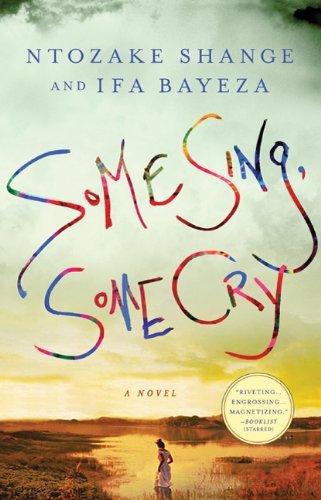Feature photo by Chester Higgins Jr./The New York Times
On a mildly cool night filled with a blanket of tangled oneness –a mixture of mid-autumn chills and begetting winds—it seemed like being at the DuSable Museum of African Art was the right place to be. Not only was it a haven from the cold, but also one couldn’t help but be amazed by the surrounding faces of the curious gazers and the stunning artifacts. An institution, co-founded by late-great-warriors like Margaret Burroughs, that historically emphasized the relevance of today’s African art and culture while not overshadowing the past—leaving room for interpretive explanations of black and brown faces that can be seen sculpted by clay entrenched fingers, juxtaposed confidently on the walls, or heard willfully bellowing down the corridors.

On Friday November 19th, Ntozake Shange (author of For Colored Girls Who Considered Suicide/When the Rainbow is Enuf) and Ifa Bayeza (The Ballad of Emmit Till) shared passages of their new co-authored book Some Sing, Some Cry; a novel about the heavy-hitting reality of black womanhood. It captures the journey of these “colored” women as they catapult form their past lives in the harsh, victimizing Jim Crow South, leaving their southern twang—not to mention their names and generational divides—to experience the promising new life of the north in the 1920s and 30s. It’s a narrative that unveils the social and genealogical tracks of the grandmothers, sisters and daughters of the past.
Audience members waited calmly in their locks and Afros as the purple and indigo lights propelled atop their conscious minds and bodies wearing dresses, kente clothes, jeans and graphic t-shirts. It was a mixed affair with patrons who may have purchased the 1975 print of Shange’s choreopoem or those who may not have gotten hip to her award winning words until Tyler Perry’s adaptation; either way, the hues flowing from the stage lights weren’t the only color worth taking in.
As Shange and Bayeza, biological sisters, and, seemingly, kindred spirits walked onto the stage to a cacophonous applause welcoming them to their first performance in Chicago. Shange swayed in with her walking stick in one hand, and her sister’s arm pretzeled, and grip held tightly in the other—followed by the band, a mix of a cellist, percussionist, guitar and keyboard with Chicago vocalist Maggie Brown singing the last breath of life into the characters.
They took their places “You ready for a live jam session,” cued Ntozake as she began reading theater-style with on par thumps and notes guiding them across stanzas as they read.
It was clear that Ntozake Shange wasn’t the same woman who crammed once forgotten messages of the wounds of women, carefully tended to extract joy and triumph. At 62, her relationship with words seemed troublesome—at least orally—and one could easily be taken aback by the obvious flinching dynamic between the women. But those moments were minute.
The show lasted just over an hour completing the arc of Character Betty Mayfield who overtakes the Harlem music scene with the likes of Count Basie and Moms Mabley, a far cry from the South Carolina upbringing Betty happily escaped.
The Duality of the band and the presences of the great literary queens left the crowd full with thought and an even greater affinity for the works of the women, making it difficult to watch the legends bow off into the distance. It was one of those nights one can only hope they encounter again.